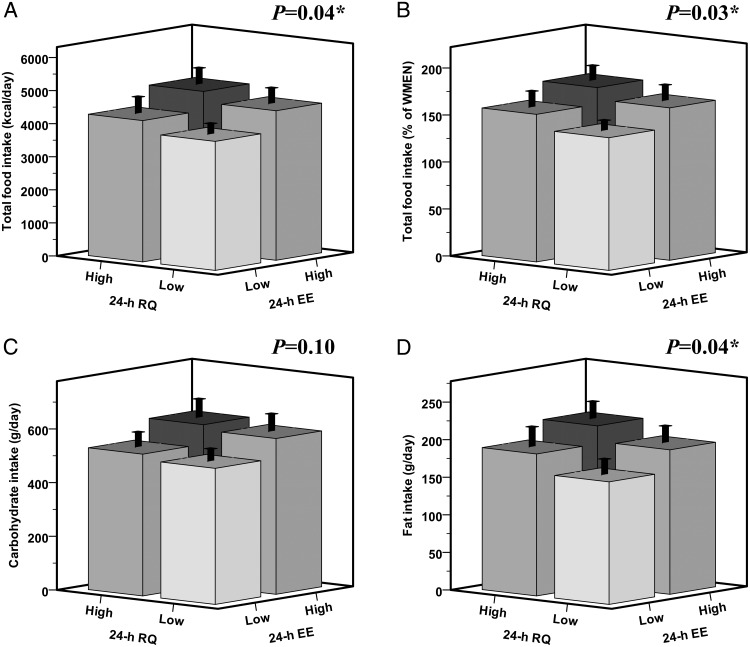Figure 4.
Phenotypes of ad libitum food intake based on the cumulative effects of 24-hour EE and 24-hour RQ. Subjects were categorized in two groups (High and Low) based on the sign of the residuals of 24-hour EE and 24-hour RQ after adjustment for age, gender, ethnicity, FM, FFM (24 h EE), age, gender, ethnicity, deviation from energy balance, and percentage of body fat (24 h RQ) by multiple regression analysis. The High groups include individuals with a positive residual (ie, the measured value of 24 h EE or RQ was higher than the predicted value calculated based on the multivariable regression model including all the determinants), whereas the Low groups include those having a negative residual. Total caloric intake is calculated as the average daily kilocalories consumed over 3 days (panel A) and expressed as a percentage of the WMEN (panel B). Carbohydrate (panel C) and fat (panel D) intakes are calculated as the average weight in grams of macronutrient consumed over the 3 days of ad libitum food intake. P values are obtained by ANOVA. Individuals with both relatively higher 24-hour EE and RQ (black bar, n = 23) consumed on average 947 kcal/d (P = .006) more than the individuals with both relatively lower EE and RQ (white bar, n = 23). There were no differences among the four groups based on subjects' age (P = .38), gender (P = .66), ethnicity (P = .60), body weight (P = .71), body fat (P = .54), FM (P = .71), and FFM (P = .75).

